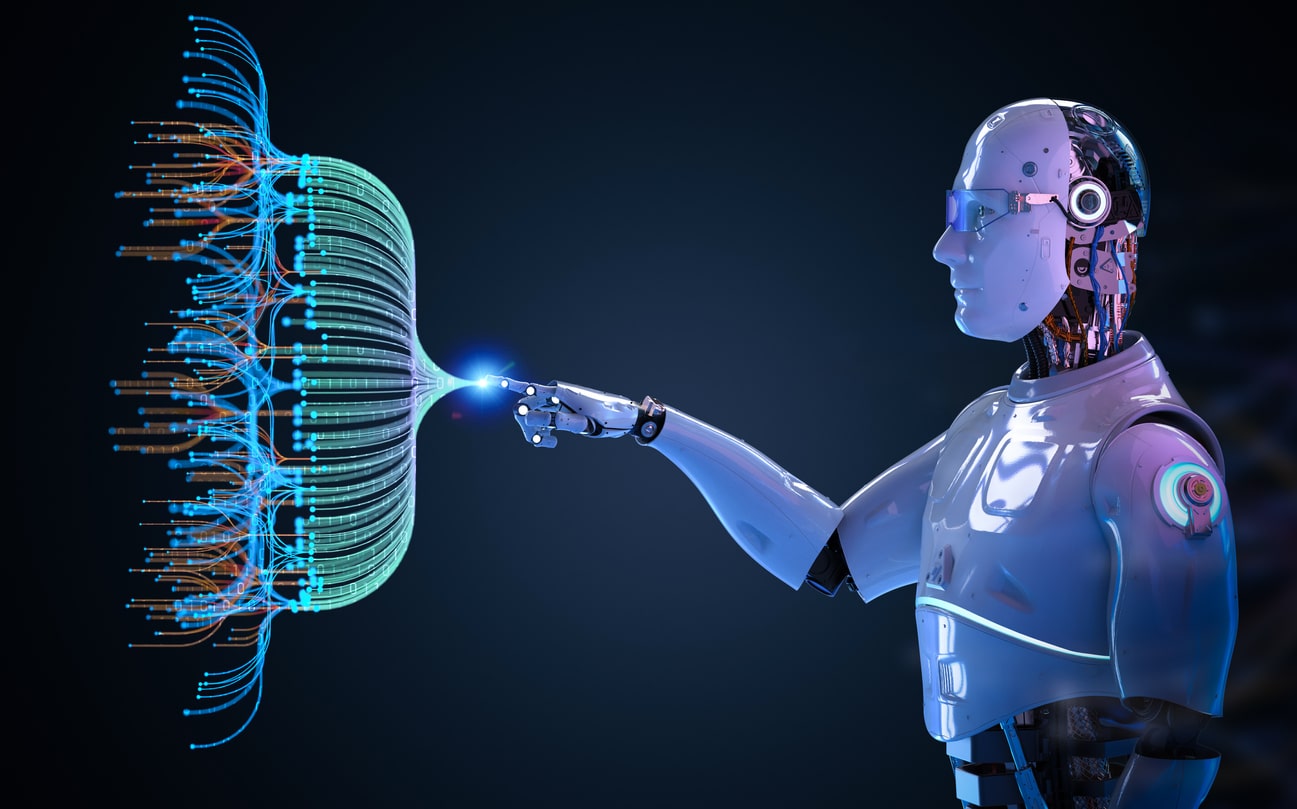Machine Learning Modeling: What It is and How it Works

Machine learning modeling is at the core of modern AI, driving innovations across industries. Understanding what these models are and how they’re built, trained, and optimized can equip you with the skills to better analyze data, build intelligent systems, and drive innovation across industries.
What Is a Machine Learning Model?
A machine learning model is a computational algorithm trained to identify patterns, relationships, or structures within data. It is built using mathematical and statistical techniques to process input data and generate predictions, classifications, or decisions without explicit human instructions for every possible scenario.
The process of creating a machine learning model involves feeding it training data, allowing it to learn from examples, and optimizing it to improve accuracy and performance. The model refines its internal parameters based on patterns it detects, enabling it to generalize its learning to new, unseen data.
Machine learning models power a wide range of real-world applications, from recommendation systems and speech recognition to medical diagnosis and financial forecasting. The effectiveness of a model depends on factors like the quality of the data, the choice of algorithm, and the tuning of hyperparameters to minimize errors and maximize predictive accuracy.
Why is Machine Learning Modeling Important?
Machine Learning (ML) can process vast amounts of data to uncover subtle correlations, discover new insights and provide more accurate predictions than would be practical using traditional methods. Machine learning models can be trained unsupervised or guided with human input to produce the best results.
Machine learning is an efficient way to scale scarce data science and data engineering resources. Once trained, a machine learning model can analyze data streams as new data is created to provide real-time insights which help an organization respond to market and customer behavior changes as they happen.
Types of Machine Learning Models
There are many kinds of machine learning models adapted to different needs. Below is a selection of models.
Linear Regression Models
Linear regression models are a type of statistical method used to understand the relationship between a dependent variable and one or more independent variables. The goal is to fit a straight line (in simple linear regression) or a hyperplane (in multiple linear regression) to the data that best represents the underlying relationship. The model assumes that the relationship between the variables is linear, meaning changes in the independent variables result in proportional changes in the dependent variable.
Linear regression is commonly used for predicting continuous outcomes, such as estimating prices, forecasting sales, or predicting trends. The model works by minimizing the difference between the observed data points and the predicted values, often through a technique called “least squares,” ensuring the best possible fit.
Decision Tree Models
Decision tree models are a type of supervised machine learning algorithm used for classification and regression tasks. These models split the data into subsets based on feature values, forming a tree-like structure with decision nodes and leaf nodes. Each decision node represents a feature test (e.g., “Is age greater than 30?”), and each leaf node represents an outcome (e.g., class labels or numerical values).
Decision trees are easy to interpret and can model complex, non-linear relationships. They are often used in applications such as customer segmentation, loan approval, and medical diagnosis. However, decision trees are prone to overfitting, which can be mitigated using techniques like pruning or ensemble methods like random forests.
K-Nearest Neighbors Model
K-Nearest Neighbors (K-NN) is a simple, non-parametric machine learning algorithm used for classification and regression tasks. It works by predicting the label or value of a new data point based on the majority label or average of its ‘K’ closest neighbors in the feature space.
K-NN does not require training, as it simply stores the training dataset and makes predictions during the testing phase. The model’s performance depends on the choice of ‘K’ (the number of neighbors) and a suitable distance metric (e.g., Euclidean distance). K-NN is commonly used in recommendation systems, image classification, and anomaly detection due to its simplicity and flexibility.
Neural Network Models
Neural network models are a family of machine learning algorithms inspired by the structure and functioning of the human brain. They consist of layers of interconnected nodes (neurons), where each node processes inputs, applies weights, and passes the output to subsequent layers.
Neural networks can model highly complex, non-linear relationships in data, making them powerful for tasks like image recognition, natural language processing, and speech recognition. They are trained using backpropagation, where the model adjusts its weights based on the error of its predictions. While highly flexible and capable of handling vast amounts of data, neural networks require large datasets and substantial computational power for training.
Logistic Regression Model
Logistic regression is a statistical model used for binary classification tasks, where the goal is to predict one of two possible outcomes (e.g., success or failure, yes or no). Despite its name, logistic regression is a classification algorithm rather than a regression algorithm. It uses the logistic function (sigmoid curve) to map predicted values to probabilities between 0 and 1, making it ideal for predicting categorical outcomes.
Logistic regression is widely used in applications like medical diagnostics, customer churn prediction, and spam detection. It is simple, interpretable, and efficient for linear decision boundaries but may struggle with complex, non-linear relationships.
Naive Bayes Model
Naive Bayes is a family of probabilistic models based on Bayes’ Theorem, used primarily for classification tasks. The “naive” part comes from the assumption that all features in the dataset are independent of each other, which often doesn’t hold true in real-world data.
Despite this assumption, Naive Bayes models can perform surprisingly well, especially in text classification tasks like spam filtering or sentiment analysis. The model calculates the probability of each class based on the likelihood of each feature given the class and then assigns the class with the highest probability. Naive Bayes is fast, simple, and works well with large datasets and high-dimensional data.
Transformer Model
Transformer models are a type of deep learning model that have revolutionized natural language processing (NLP) tasks like translation, summarization, and text generation.
Unlike traditional recurrent neural networks (RNNs), transformers rely on a mechanism called self-attention, which allows them to process all input data in parallel rather than sequentially. This enables transformers to capture long-range dependencies in data more efficiently. The architecture is composed of layers of attention and feed-forward networks, which learn contextual relationships between words or tokens in a sequence. Transformers are the foundation of popular models like GPT (Generative Pretrained Transformer) and BERT (Bidirectional Encoder Representations from Transformers), which have achieved state-of-the-art performance in various NLP tasks.
Machine Learning Modeling Training
There are four common types of machine learning:
- Supervised machine learning algorithms where humans provide examples of good outcomes.
- Unsupervised machine learning algorithms allow algorithms to find correlations in the data.
- Semi-supervised machine learning algorithms provide some human input.
- Reinforcement machine learning algorithms have humans guide the model by providing feedback on output to reinforce correct behavior.
How is Machine Learning Applied?
The following are examples of applications that use machine learning.
Real-Time Analytics
Machine learning models can study events such as weather and social media streams to determine if a situation is likely to escalate and advise operators.
Online Retail
Machine Learning models can personalize shopping by providing real-time recommendations and running relevant promotions.
Healthcare
Doctors can use AI models to diagnose problems and get advice on treatments.
Stock Trading
Machine Learning models can provide buy and sell guidance based on trading patterns, SEC filings and news about a company.
Risk and Fraud Management
Credit card issuers and insurance companies have to monitor for fraud continuously. AI models enable them to study transactions as they happen to predict which ones are suspicious.
Actian Data Management for Machine Learning Projects
Machine learning models rely on sound data to make accurate predictions. The Actian Data Platform perfectly complements ML projects by providing a unified experience for ingesting, transforming, storing and analyzing data.
Built-in data integration technology prepares training data by automating data pipelines that prepare data for training machine learning models.
The Actian Data Platform is available on-premise and on multiple public cloud platforms.


